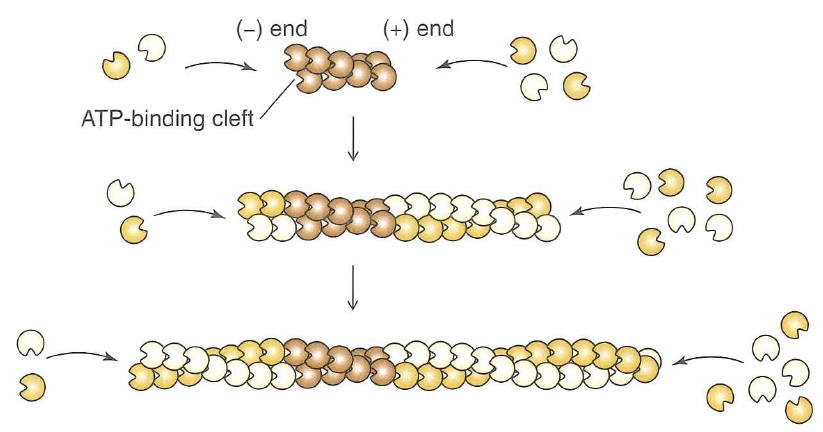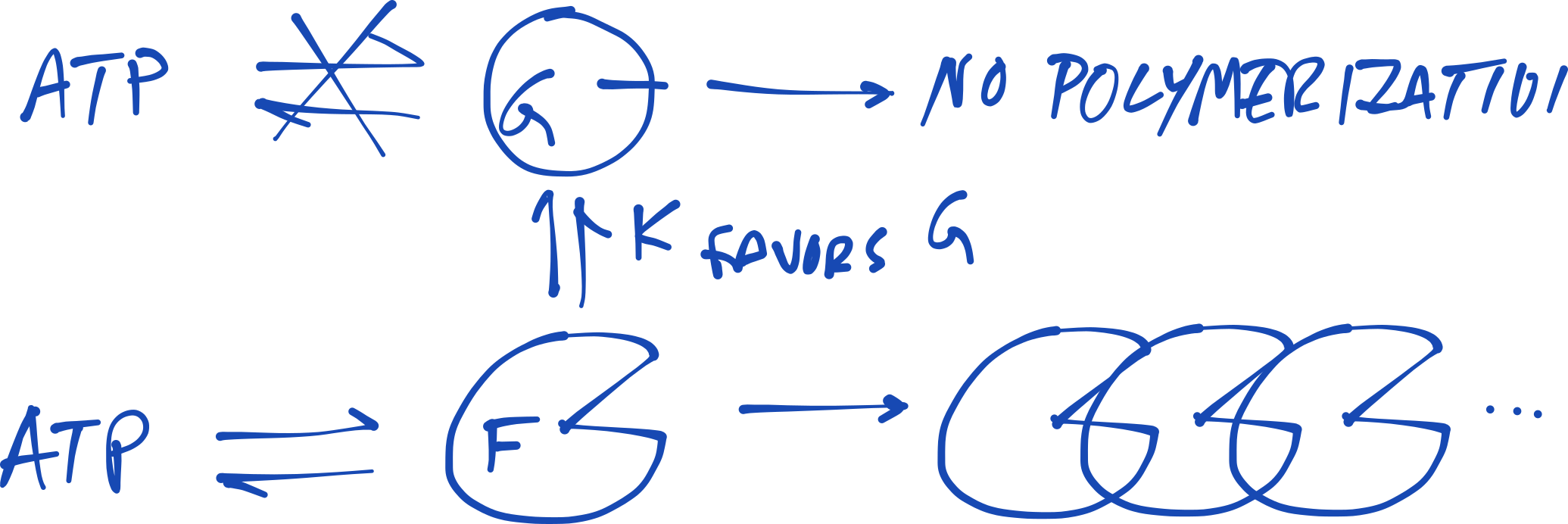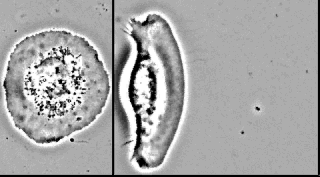Midterm #2: 7-9 pm on Wednesday, November 8, McKenzie 240C
Review Session: 7-9 pm on Thursday, November 2, Lawrence 115
Cytoskeleton and motor proteins
2017-10-30
Conceptual goals
- Understand that the cytoskeleton give structure and dynamics to the cell
- Understand how the cytoskeleton is dynamically assembled
- Understand how motor proteins work and allow movement in cell
Cells are spatially and temporally organized

How do cells get this organized, despite random thermal motion?

Ron Vale, UCSF
What are the "rails?"
- Actin
- Microtubules
What are the motors?
- Kinesin
- Myosin
- Dynein
Cells are laced with a cytoskeleton made of actin and microtubules

The cytoskeleton has exquisite 3D structure
The cytoskeleton has exquisite 3D structure
The cytoskeleton:
- Gives the cell structure and allows cell movement
- Is built from monomeric subunits
- Polymerizes in an energy-dependent manner
- Has a "-" and a "+" end
- Dynamically breaks down
Actin filaments assemble double-stranded filaments from actin monomers

A conformational change in G-actin leads to polymerization

Holmes (2009) Nature 457:22
Monomeric actin is in equilibrium between G and F forms
F, but not G, catalyzes ATP to ADP hydrolysis (a favorable reaction)

Monomeric actin is in equilibrium between G and F forms
F, but not G, catalyzes ATP to ADP hydrolysis (a favorable reaction)

Other molecules can control polymerization
Microtubules assemble tube structure from $\alpha$ and $\beta$-tubulin

Microtubules dynamically assemble and break down
Credit: Eva Nogales, UC BerkeleyRegulated assembly/dissassembly of cytoskeleton leads to movement.


Regulated assembly/dissassembly of cytoskeleton leads to movement.
The cytoskeleton:
- Gives the cell structure and allows cell movement
- Is built from monomeric subunits
- Polymerizes in an energy-dependent manner
- Has a "-" and a "+" end
- Dynamically breaks down
That explains the rails; what about the motors?
Kinesin is an archetypical motor protein
Molecular motors:
- "Walk" along microtubules and actin
- Take steps in an energy-dependent fashion
- Can usually only walk one way down a filament
- Kinesin walks - to + on microtubules
- Dynein walks + to - on microtubules
- Move cargo fast relative to diffusion
Kinesin walks along the microtubule
Kinesin walks like a drunkard
Kinesin goes fast: 5 $\mu m\ s^{-1}$.
For a 1 cm neuron, this means a vesicle can be moved in 5.5 hr.
With just diffusion, this would take roughly 6 days
The cytoskeleton:
- Gives the cell structure and allows cell movement
- Is built from monomeric subunits
- Polymerizes in an energy-dependent manner
- Has a "-" and a "+" end
- Dynamically breaks down
Motor proteins
- Transport materials, move cells, and give muscle contraction
- "Walk" along microtubules and actin
- Take steps in an energy-dependent fashion
- Can usually only walk one way down a filament
- Move cargo fast relative to diffusion